- JAPANESE
- LANGUAGE
X
 THAT IS GOOD
THAT IS GOOD
Hello, this is Kobayashi. This time is continuation-ish from last time. If you haven’t read the previous article, please do so (https://thatisgood.jp/en/taketokobayashi002/).
As the term “Yaoyorozu no kami” (In Shintoism, it’s believed a god exists for everything.)implies, in Japan, there is a belief that all things are inhabited by Kami, supernatural powers. In the Kojiki (Records of Ancient Matters, the oldest history/mythology book in Japan), more than three hundred gods appear, but this is a glimpse of the fact that many more nameless kami existed in Japan long before that. With the changing seasons and abundant nature, the Jomon people must have interacted with many kamigami = spirits, as they were in closer contact with nature than we are today. Dogu, the clay figurines of the Jomon period seem in an alien shape from a modern perspective. We can only imagine what the shapes and patterns mean now. The Shakouki Dogu (Photo1 : Goggle-eyed clay figure) was named after its eyes, which are shaped like the snow goggles worn by the Inuit (Eskimos) when walking in the snow, but a popular meme is that it resembles an alien (or EVA suit). There are also various theories that the figure is a composite of a newborn baby and the mother who gave birth to it, but I believe that the Jomon Dogu (Jomon Clayfigurine) is a characterization of nature’s energy = spirit.
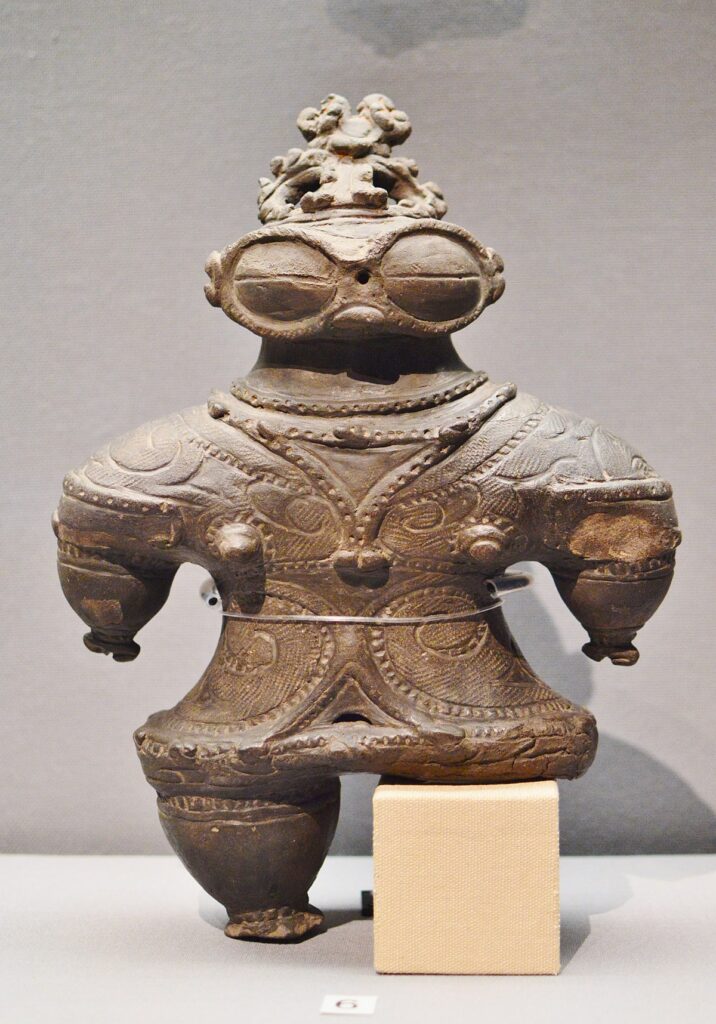
The act of carving invisible beings into stone or wood has been practiced since the Paleolithic period. The so-called “lion man” or “lion lady” (Löwenmensch), an ivory statue, was discovered in 1939 in the Stadel Cave on Mt. Hohlenstein in the Lönetal (stray valley) of the Swabian Alps in Germany. (Photo 2) Jomon Period in Japan, The statue with a lion’s head on a human body is believed to be about 32,000 years old, making it the world’s oldest animal figurine sculpture discovered today.
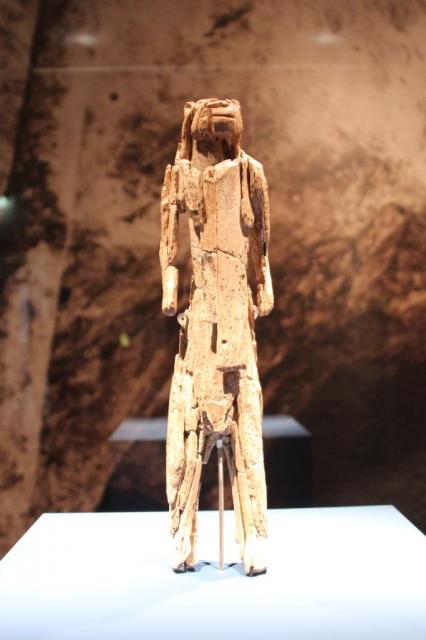
The Cucuteni culture flourished from 5500 to 2750 B.C. in the region from the Carpathian Mountains to the Dnieper River, which is present-day Romania, Moldova, and Ukraine. It is believed that the goddess (earth mother goddess) was also worshipped in this culture, which coincided with the middle Jomon period, and stone statues and clay figures of the goddess with snakes or birds’ heads have been found. (Photo 3) According to archaeologist Marija Gimbutas, the Cucuteni culture (Tripolye culture) was a representative culture of “Old Europe” before the conquest of the Indo-European speaking peoples of the Kurgan culture from the eastern steppes and the lifestyle was mainly agricultural and pastoral, with some hunting and fishing.There is little evidence of class differentiation, and many examples are known of entire villages that were deliberately burned and rebuilt every few decades.The purpose of this is unknown, but some people think it may be a religious ritual that signifies the “death and rebirth” of the village.This is just my opinion, but I feel that there is some kind of synchronicity between the Jomon culture and the Paleo-European civilization, which share a common belief in goddesses and a matriarchal society.
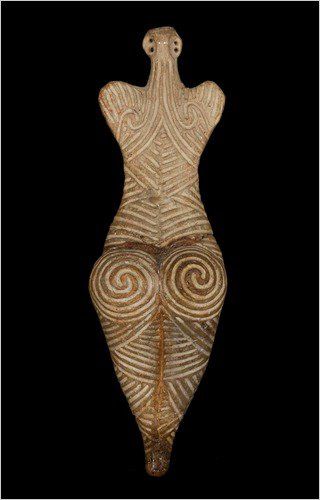
I’m getting off the subject again lol, but further down the line, the characterization of spirits and kami is endless, such as Kachina of the Hopi tribe (Photo 4). I believe that it is an instinct for humans to visualize and materialize transcendent beings. The cognitive revolution that started in the Paleolithic era has enabled humans to recognize themselves objectively. This has enabled us to plan, invent and use tools, and develop our civilization to what it is today. However, in return, humans have lost the link with nature that all other plants and animals have. Originally, plants and animals behaved according to the information engraved in their DNA, knowing from birth who they were and how they should behave. Only humans have the “freedom of choice” to decide how to live and who to become. However, this freedom is built on the double-edged sword of separation from others and from nature. However, this freedom is built on the double-edged sword of separation from others and from nature. I believe that the characterization of Kami is one of the ways to fill this void.
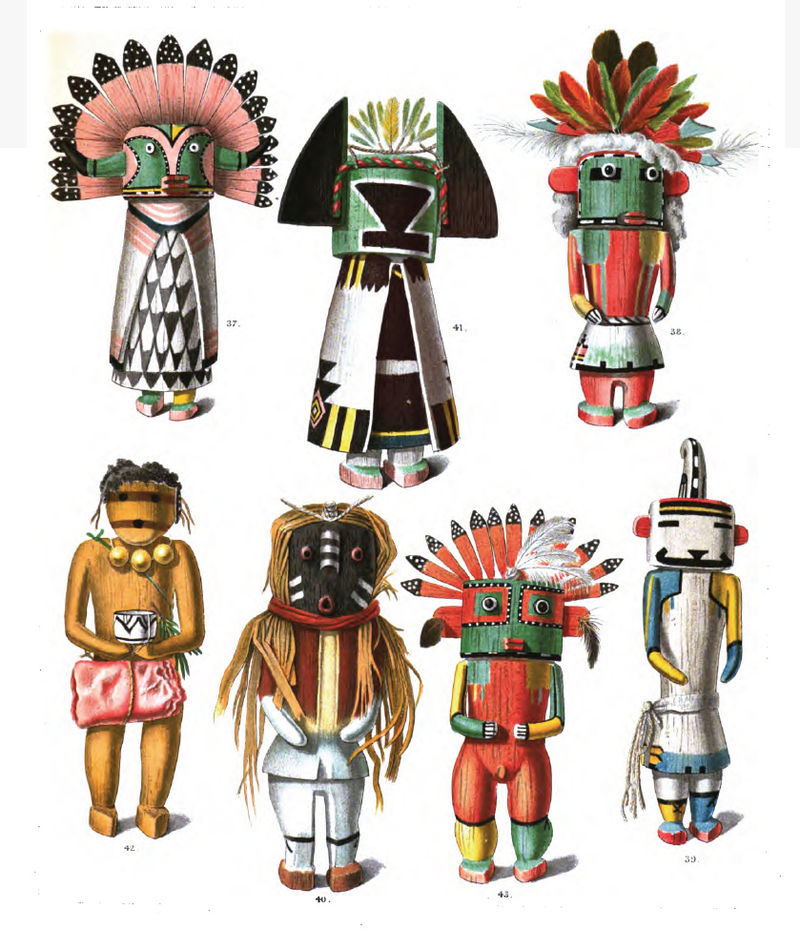
Well, the above culture of the earth mother goddess and the old gods that were worshipped in the Cucuteni culture and other cultures were destroyed and conquered by the cavalry from the east of Europe. However, the ancient gods have not been completely forgotten, and they still remain as giants and monsters in Greek and Norse mythology to this day. The Titans in Greek mythology are the ancient gods who preceded the Olympians. The story of Zeus, who symbolized the heavens and thunder, destroying the old god of agriculture, Cronus of Titan, to rule over the new world symbolizes how the cavalry people destroyed the matriarchal society and created the culture that is the foundation of Europe today. In the ancient gods, there is also Typhon (the son of Gaia, the earth mother goddess, and Tartarus. He is a giant who is said to be both a god and a monster. He is the strongest and most powerful monster in the same mythological system, and is the only being who has defeated Zeus, the king of the gods. From the thighs up, he looks like a human, but from the thighs down, he looks like a giant viper coiled in a spiral.) and Echidna (a monster in Greek mythology, a beautiful woman on the top half of her body and a snake on the bottom half with wings on her back. The meaning of her name is “mamushi=poison snake woman.”) It is also interesting to note that many of them are related to snakes. Nowadays, snakes are often regarded as an abomination, but as seen in the patterns on Jomon pottery, snakes may have been a symbol of rebirth in ancient times. A paternalistic society that worships a god in the sky concentrates power to a single point. It was also the driving force that accelerated civilization, but in today’s mature civilization, there is much to be learned from or a return to the older and more peaceful matriarchal society.
I can’t quite get to the present day, but I’ll post more next time lol
(Image source)
Photo 1
https://ja.wikipedia.org/wiki/%E9%81%AE%E5%85%89%E5%99%A8%E5%9C%9F%E5%81%B6
Photo 2
https://www.ab-road.net/europe/germany/ulm/guide/09705.html
Photo 3
https://twitter.com/momokanazawa/status/1066870227646836736/photo/1
Photo 4
https://ja.wikipedia.org/wiki/%E3%82%AB%E3%83%81%E3%83%8A#/media/%E3%83%95%E3%82%A1%E3%82%A4%E3%83%AB:Kachina_dolls.jpg
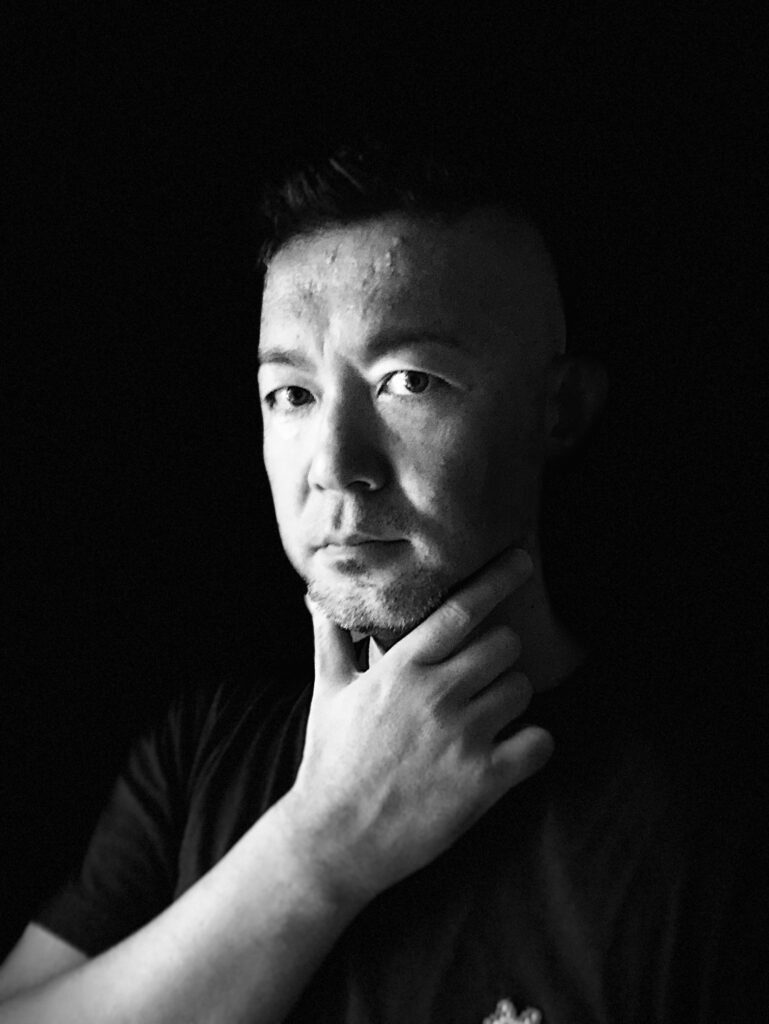
ARTSTATION
Taketo Kobayashi (artstation.com)
Instagram ID
@humanoise
After having experience of 3D graphics and animation at Tokyo Institute of Technology creative laboratory, and Gonzo Co., Ltd., Taketo started his own project as an artist. Using digital technology like CG, 3D printing as his “brush”, Taketo creates a wide variety of artworks from 3D printed sculpture to animation. In a collaboration project XSENSE, Taketo utilizes CGI in street art to create murals(Denver, CO, USA), also using his unique style animation for stage design and collaborated with contemporary Noh theatrical group. In addition to creating his own artworks, Taketo curates the group art show “ARTs of JOMON” hosted by Japanese non-profit JOMONISM, keep introducing contemporary artists/artworks influenced by ancient Japanese Jomon culture.(Aomori Museum of Art / Spiral Garden / Denver International Airport / Kuala Lumpur)
It is Taketo’s mission to make invisible things, emotions, energy, next dimensions of consciousness into “shapes”.
Project/Art history(excerpt)
PROJECTS Digital G-O-D, UltraSuperNew gallery, Singapore, Jan 2020
Haw Par Villa RE•MIX
Chinese Cultural Centre, Singapore , Jan 2020
”Light to Night Festival” Projection mapping at Asian Civilization Museum, Singapore , Jan 2020
A SIGN OF THE TIMES EXHIBITION, Singapore , Jan 2019
”ARTs of JOMON” exhibit @ISETAN KL, Malaysia , Aug 2017, curation&direction
“Colorado Crush”, a mural festival in Denver, CO. Sept 2016, created artwork
“DMS” Collaboration with Canon June 2015, created&exhibited 3D printed prosthetic leg
”Oakley Exhibition” Exhibited artworks at Oakley store Harajuku, Tokyo, Oct 2014
AWARDS “Eisen Herz” Ufab Global Creative award Finalist. 2016. 3D printed cover for “Tamiya mini 4WD” using generative design
“More Than Human type-Unicorn” a 3D printed prosthetic leg. Ufab Global Creative award Finalist. 2015
“SC1-EXP” Zushi International Projection Mapping Competition, Grand Prix. 2014
“Yakushi-Nyorai”(2013)
3DCG model for 3D printing. Winning work at Digital modeling competition held by Japan Society for Graphic Science
Original CG animation ‘Matsuri’(May 2010)
Design, modeling, production coordination. A CG animation based on Japanese ‘Jomon’ culture. Created for promotion of Aomori Prefecture. Accepted at Siggraph Asia 2010. (On VIMEO: https://vimeo.com/25144961)